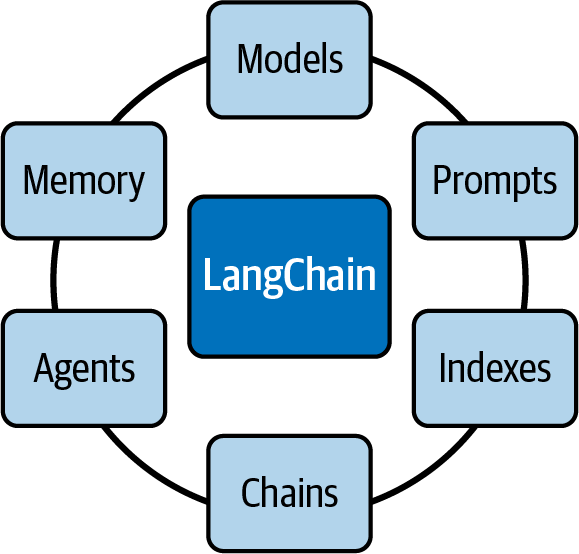Chapter 5. Advancing LLM Capabilities with the LangChain Framework and Plug-ins
This chapter explores the worlds of the LangChain framework and GPT-4 plug-ins. We’ll look at how LangChain enables interaction with different language models and the importance of plug-ins in expanding the capabilities of GPT-4. This advanced knowledge will be fundamental in developing sophisticated, cutting-edge applications that rely on LLMs.
The LangChain Framework
LangChain is a new framework dedicated to developing LLM-powered apps. You will find that the code integrating LangChain is much more elegant than the example provided in Chapter 3. The framework also provides many additional possibilities.
Installing LangChain is fast and easy with pip install langchain.
Warning
At the time of this writing, LangChain is still in beta version 0.0.2XX, and new versions are released almost daily. Functionalities may be subject to change, so we recommend using caution when working with this framework.
LangChain’s key functionalities are divided into modules, as depicted in Figure 5-1.

Figure 5-1. LangChain modules
Following are brief descriptions of these modules:
- Models
-
The Models module is a standard interface provided by LangChain through which you can interact with various LLMs. The framework supports different model-type integrations from various providers, including OpenAI, Hugging Face, Cohere, ...
Get Developing Apps with GPT-4 and ChatGPT now with the O’Reilly learning platform.
O’Reilly members experience books, live events, courses curated by job role, and more from O’Reilly and nearly 200 top publishers.

